U.S. June Nonfarm Payroll Commentary: Short-Term Data Improves, but Labour Market Weakness Persists


TradingKey - On 3 July 2025, the U.S. released its June nonfarm payrolls data, showing a job gain of 147,000, surpassing market expectations of 111,000 and May’s figure of 144,000. Additionally, the U.S. unemployment rate declined compared to the prior month. These figures signal a temporary strengthening of the U.S. labour market.
However, despite the stronger-than-expected June data, we anticipate a return to labour market softness in the coming months for three key reasons: First, the positive short-term data does not reverse the broader downward trend in nonfarm payrolls. Second, rising jobless claims indicate continued weakness in job growth. Third, cooling U.S. macroeconomic activity is dampening corporate hiring willingness and capacity.
Looking ahead, the medium-term labour market weakness may prompt the Federal Reserve to resume its rate-cutting cycle. Such a shift toward accommodative monetary policy, combined with expansionary fiscal measures like tax cuts, is expected to mitigate the impact of an economic slowdown. This supports our optimistic outlook for U.S. equities in the medium term. If labour market weakness materialises as expected in the coming months, potentially triggering short-term stock market corrections, this could present strategic opportunities for investors to position for future gains.
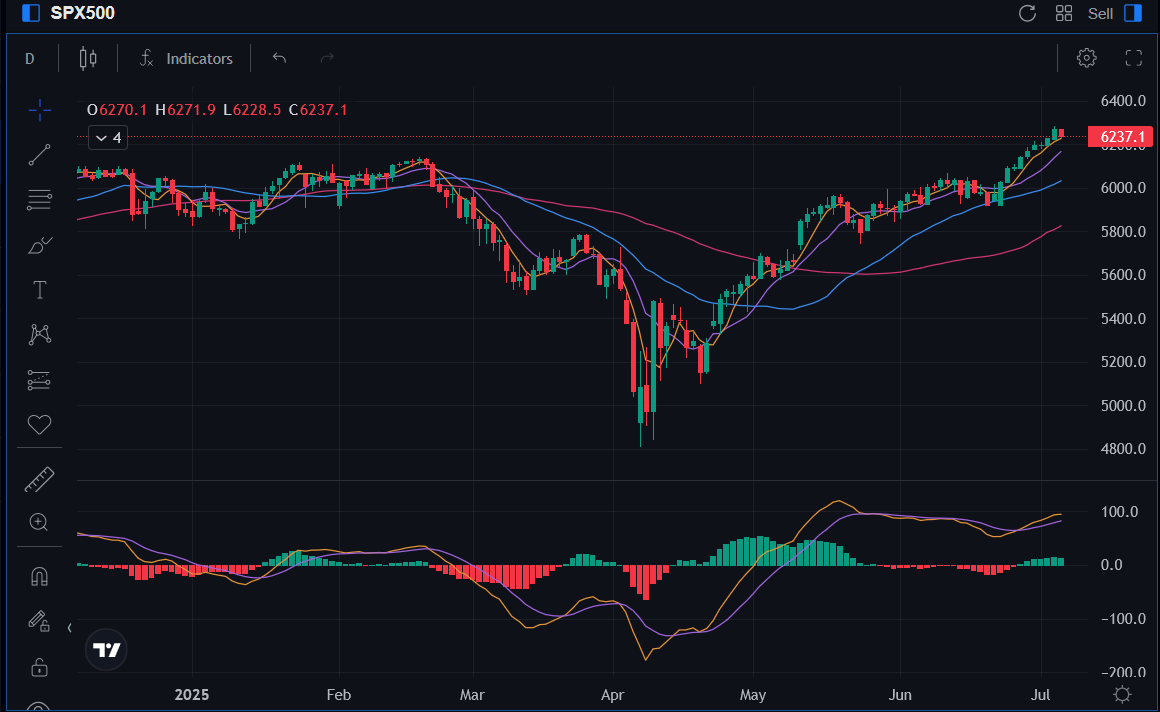
Source: Mitrade
On 3 July 2025, the U.S. Department of Labour published its June nonfarm payrolls report, revealing a job increase of 147,000, exceeding market expectations of 111,000 and May’s figure of 144,000. Additionally, the U.S. unemployment rate declined compared to the previous month (Figure 1). These indicators point to a temporary strengthening of the U.S. labour market.
Figure 1: U.S. Labour Market Data

Source: Refinitiv, TradingKey
Looking ahead, we anticipate a return to softness in the U.S. labour market in the near term, driven by three key factors:
- First, despite June’s stronger-than-expected data, the downward trend in nonfarm payrolls persists. Since March 2025, job additions have steadily declined from 228,000 (Figure 2). Without significant external catalysts, a fundamental reversal in the second half of the year is unlikely.
- Secondly, high-frequency data on continuing jobless claims indicate a sustained increase since early June 2025. The number of claims rose from 1.904 million on 5 June to 1.964 million by 3 July, an increase of 60,000 (Figure 3). This upward trend is likely to continue reflecting in nonfarm payroll data.
- Last, the ongoing slowdown in the U.S. macroeconomy is dampening corporate hiring intentions. Weak domestic demand further limits firms' ability to expand their workforce, adding downward pressure on future nonfarm payroll data.
Figure 2: U.S. Nonfarm Payrolls (000)
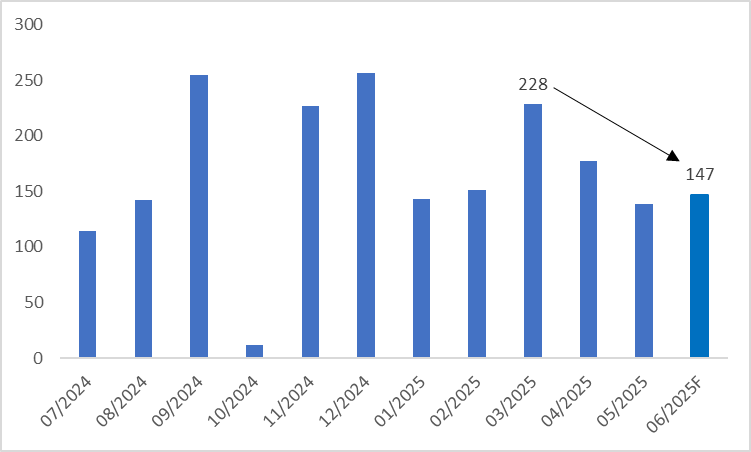
Source: Refinitiv, TradingKey
Figure 3: U.S. Continuing Jobless Claims (000)
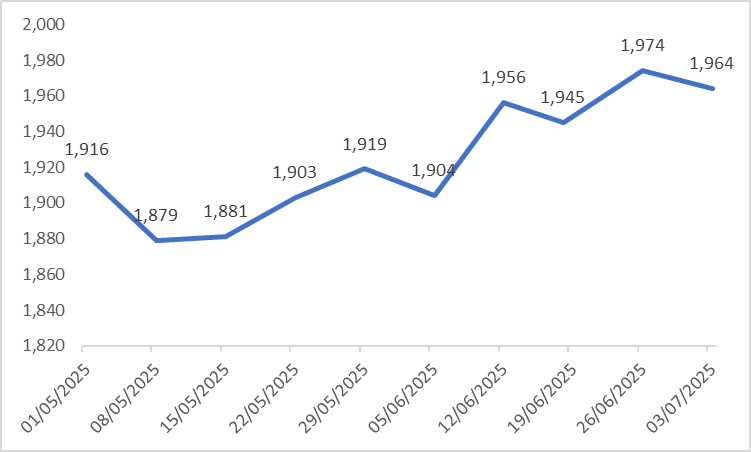
Source: Refinitiv, TradingKey
A softening labour market will reduce household income, thereby constraining private sector consumption. This negative "employment-consumption" cycle will weigh on U.S. economic growth. While high tariffs may increase imported goods prices, subdued domestic demand will limit upward inflationary pressure. In this "low growth, low inflation" environment, the Federal Reserve is likely to initiate a new rate-cutting cycle in the near term (Figure 4).
The combination of accommodative monetary policy and expansionary fiscal measures, such as tax cuts, is expected to mitigate the impact of an economic slowdown, reinforcing our optimistic medium-term outlook for U.S. equities. Consequently, if the labour market weakens as anticipated in the coming months, triggering short-term stock market corrections, this could present strategic opportunities for investors to position for future gains.
Figure 4: Fed Policy Rate (%)
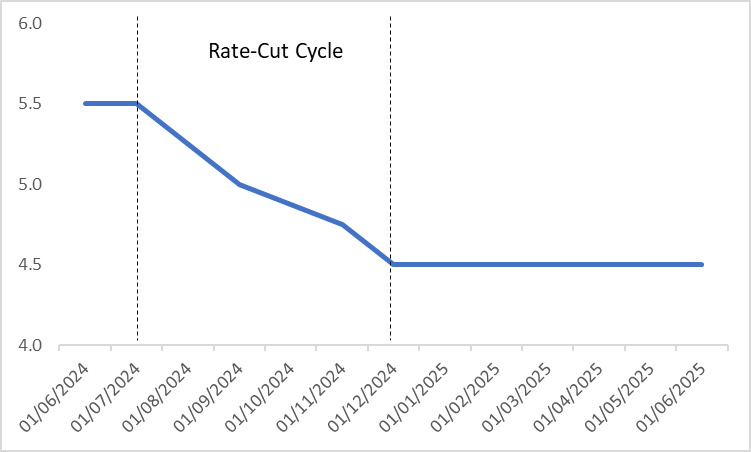
Source: Refinitiv, TradingKey
U.S. June Nonfarm Payroll Preview: Labour Market May Continue to Cool, but Mid-Term Optimism for U.S. Stocks Persists
TradingKey - The U.S. is set to release June non-farm payroll data on 3 July 2025, with market consensus forecasting a 120,000 job gain, down from May’s figures. The expected softening in June’s employment data stems from three key factors: First, the ongoing deceleration in recent non-farm payrolls. Second, rising jobless claims signal a high probability of subdued employment growth. Third, the persistent slowdown in U.S. macroeconomic activity has curtailed corporate hiring appetite and capacity. Looking forward, we anticipate further weakening in the U.S. labour market over the next few months. A softening jobs market is likely to spur the Federal Reserve to resume interest rate cuts. This shift toward looser monetary policy, alongside expansionary fiscal measures like tax reductions, should mitigate the effects of economic deceleration, bolstering our bullish mid-term outlook for U.S. equities. Consequently, should a weakening labour market trigger a near-term correction in U.S. stocks as expected, it may present investors with a strategic entry point for future market gains.

Source: Mitrade
The U.S. Bureau of Labour Statistics is scheduled to release June non-farm payroll data on 3 July 2025. Market consensus projects a job gain of 120,000, a decline from May’s 139,000 (Figure 1). Additionally, the unemployment rate is expected to rise slightly by 0.1 percentage points to 4.3%. We concur with this consensus outlook.
Figure 1:U.S. Labour Market Consensus Forecasts

Source: Refinitiv, TradingKey
The expected softening of June’s non-farm payroll data stems from three key factors:
First, the persistent downward trend in non-farm employment. Since March 2025, job gains have steadily decreased from 228,000 (Figure 2). Without significant external catalysts, it is unlikely that June’s figures will surpass May’s results.
Second, higher-frequency data from Continuing Jobless Claims reveals a consistent rise since early June 2025. Claims increased from 1.904 million on 5 June to 1.974 million by 26 June, a rise of 70,000 (Figure 3). This upward trend underscores ongoing softness in the U.S. labour market, making a subdued non-farm payroll outcome highly probable.
Third, the sustained U.S. macroeconomic slowdown has curtailed corporate hiring intentions. Prolonged weakness in domestic demand has further limited firms’ ability to expand their workforce. These dynamics create additional downward pressure on June’s non-farm payroll figures.
Figure 2: U.S. Nonfarm Payrolls (000)
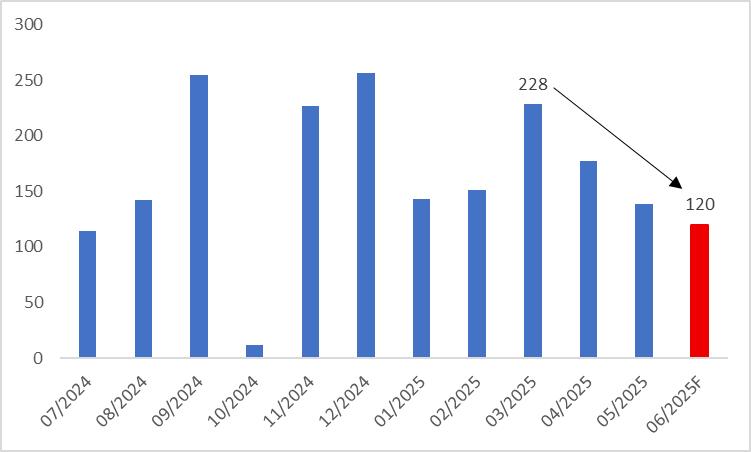
Source: Refinitiv, TradingKey
Figure 3: U.S. Continue Jobless Claims (000)
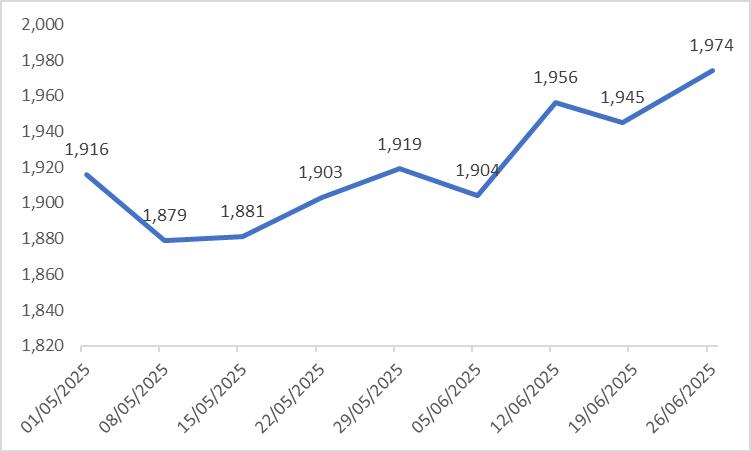
Source: Refinitiv, TradingKey
Looking forward, we anticipate sustained weakness in the U.S. labour market over the next few months, reinforcing the downward trajectory of non-farm payroll data. A weakening labour market will reduce household incomes, constraining private sector spending. This self-reinforcing labour-consumption cycle will hinder U.S. economic growth. While high tariffs may elevate imported goods prices, subdued domestic demand will limit inflationary pressures. In this environment of low growth and low inflation, the Federal Reserve is likely to initiate a new rate-cutting cycle in the near term (Figure 4).
In the equity markets, the combination of looser monetary policy and expansionary fiscal measures, such as tax reductions, is expected to mitigate the effects of economic deceleration, bolstering our bullish mid-term outlook for U.S. stocks. Consequently, should a weakening labour market, as projected, lead to a near-term market correction, it would present investors with a strategic opportunity to position for future gains.
Figure 4: Fed Policy Rate (%)
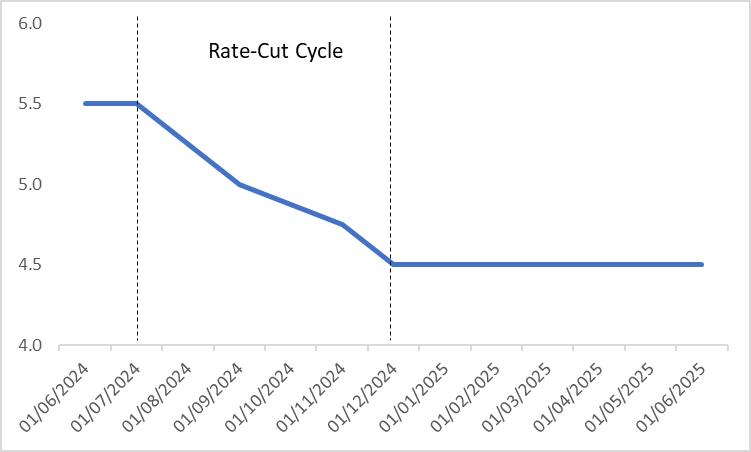
Source: Refinitiv, TradingKey







